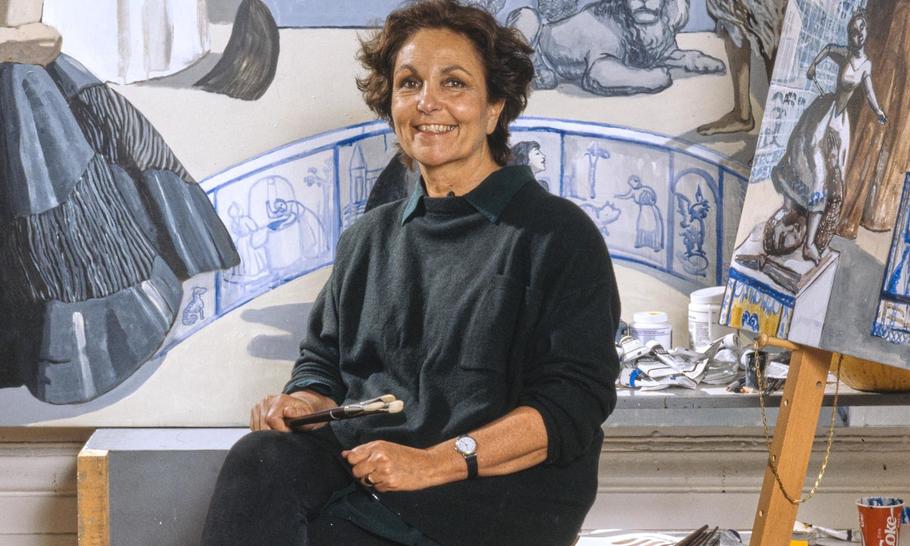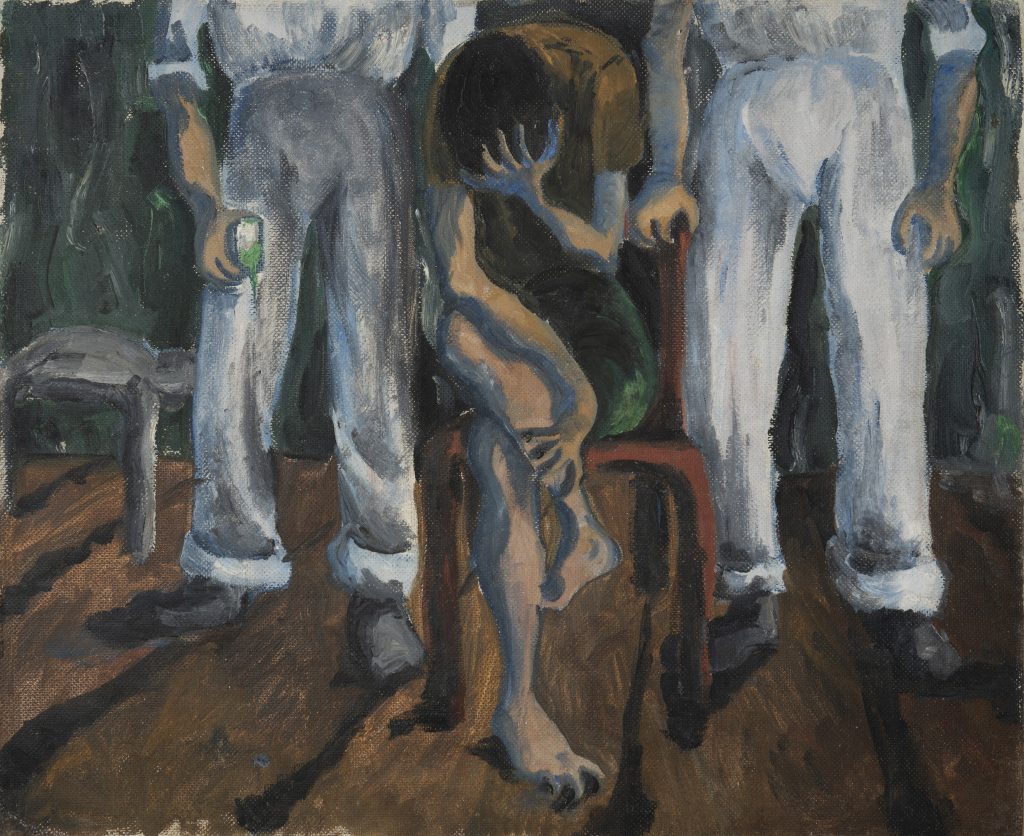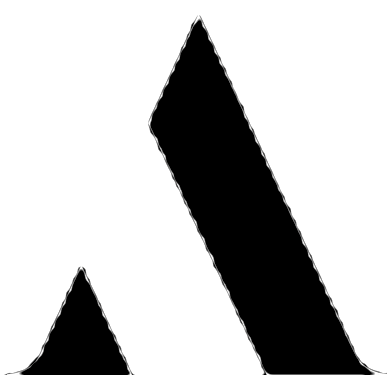Paula Rego: power and perversity

Paula Rego
Paula Rego (1935-2022) was one of the great post-war artists. Born in Portugal in 1935, she first moved to England in 1951. She married the artist Victor Willing in 1959. They moved back briefly to Portugal in 1966 but then returned to England in 1974. Victor died in 1988. In 2010 Paula was appointed a Dame of the British Empire. She died in 2022.
For the last 26 years of her life, Anthony Rudolf became her principal male model and longtime companion. Rudolf’s grandparents were Jewish immigrants from what are now West Ukraine and Poland. His grandfather, Joseph, spoke “at least nine languages”. “He never read a book apart from the Hebrew daily prayer-book,” Rudolf wrote recently, “although he did read the Yiddish newspaper.” Anthony was born in London in 1942 and became a writer, poet, translator and critic.
Paula and Anthony had an extraordinary relationship, illuminated by the exhibition of his collection at the Ben Uri Museum that closes on 5 September. He calls it “a collaboration”, in which she cast him as a character in many different stories. “It is a revealing fact,” he writes, “that her best likenesses of me were when I was playing a role, not when she was making a straight portrait.” In this exhibition Rudolf appears as Mr Rochester from Jane Eyre, as Bluebeard, as a priest from a famous Portuguese novel, The Crime of Father Amaro, and as Gregor Samsa from Kafka’s Metamorphosis.
In 2021 Rego had a major exhibition at Tate Britain (The Pain of Others). The paintings in that exhibition featured a disturbing sense of female violence which only grew during the late 1980s, with works like The Little Murderess (1987) and, above all, The Maids (1987), inspired by Genet’s play. There were also images of authority, submission and control, paintings like The Policeman’s Daughter (1987), in which a young woman polishes her father’s boot, with her arm thrust deep inside it, and The Cadet and His Sister (1988), in which a young woman does up a military man’s shoe, submissively kneeling at his feet, and, most disturbing of all, The Family (1988), in which a woman and her daughter assault the father, watched by another young girl in the doorway. These works announced Rego’s greatest theme: women’s bodies and what men do to women.
In one of her last interviews, Rego said, “beating your wife was taken completely for granted [in Portugal]. Women were the property of their fathers and then their husbands. No one came to help them.” When she was just fifteen, Rego painted Interrogation (1950), a picture of a woman, head bowed, seated between two men, visible only from the waist down, both sexually aroused, one holding a screwdriver, the other a drill.

This new exhibition at the Ben Uri Museum consists of drawings and paintings by Rego from Rudolf’s private collection (and a few pieces that Paula gave to his sister Annie). In his Introduction to the catalogue, Rudolf writes, ”The present show lays no claim to presenting Paula’s finest and/or grandest work,” but it offers an interesting introduction to her most enduring themes.
What is perhaps most astonishing about the exhibition is the power and sometimes the perversity of the images. There is a drawing, pencil on paper, from 2008 called Ferryman, in which Rudolf stands tall and strong, with a much smaller woman clinging to him, eyes shut, hands clasped around him. In two etchings, Shipwreck, after Hogarth, a tall man in a classic pietà pose, lies on the lap of another man, in high heels, while a small woman looks on.
In a print from 2006, Prince Pig gets Married to the Third Sister, printed by Paula’s longtime collaborator Curwen Press, a pretty woman in a beautiful dress sits next to a huge pig (“Prince Pig” from the title), dressed very elegantly, taken from a 16th century fairy tale. As Rudolf writes, “Paula was a voracious reader of folk stories and fairy tale.” They contribute to the compelling strangeness of her best work. A pen and ink drawing, The Wolf and Riding Hood, also draws on a fairy tale, but this time the mother takes revenge on the wolf and there are other images from fairy tales and nursery rhymes, including Baa Baa Blacksheep, in which a young girl stands between the legs of an enormous back sheep.
In a screenprint, Girl with Two Mothers, a small woman sits on the lap of a gigantic girl. In the background we can see the other mother, also diminutive. Then there is a lithograph, Unicorn, in which a woman in black boots holds a hobby horse (the “unicorn”) between her legs while another woman sits before her.
These images of perversity and domination, giant women, young girls and animals, drawing on nursery rhymes and early modern European stories, are unlike anything else in modern art. They remind us that Rego’s early work was fiercely political, opposed to Salazar’s military dictatorship and the misogyny of the Catholic ancien régime, in which violence against women was probably even more widespread than it is today. What is perhaps most striking about her images of girls and women is how original they are. There is nothing idealised about them. They are large, even gigantic, and physically powerful. The Ben Uri exhibition is a wonderful taster for what I hope will be the next major exhibition of one of the great artists of our time.
The Anthony Rudolf Collection: Ben Uri Museum, 10 June-5 September 2025.
A Message from TheArticle
We are the only publication that’s committed to covering every angle. We have an important contribution to make, one that’s needed now more than ever, and we need your help to continue publishing throughout these hard economic times. So please, make a donation.





